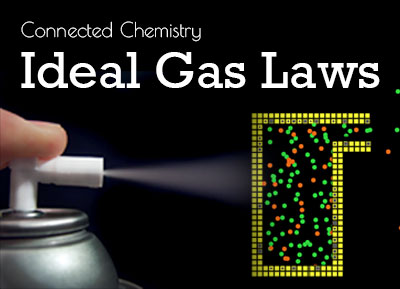The models we used in the previous activities did not let us change the volume of the container. However, many gas containers, like balloons and syringes, grow and shrink. In this lesson, we are going to explore the relationship between container volume and pressure. To do so, we will use another slightly different model. This model will allow us to simulate a syringe; it will allow us to chance the position of a wall, so that we can increase and decrease the volume.
Begin experimenting with your model and explore the relationship between your dependent variable (pressure) and your independent variable (volume). Conduct a preliminary experiment as follows:
- Run the model with the default parameters (initial wall position = 30).
- Wait for pressure to stabilize. Take note. Also note the volume of the container.
- Move the wall to the right at least 10 units above 30 (higher volume).
- Wait for pressure to stabilize. Take note. Also note the volume of the container.
- Move the wall to the left at least 10 units below 30 (lower volume).
- Wait for pressure to stabilize. Take note. Also note the volume of the container.
Record the changes in the data table below.
Note: We already know that increasing the number of particles increase pressure. So, do not change the number of particles in your trials. Otherwise, your data may mislead you.





 ) icon on he top-left corner of the CODAP window.
) icon on he top-left corner of the CODAP window. ).
). )
) ).
). Also,
Also,  Unfortunately, using the "movable line" tool would not help us in this situation because our data does not show a linear relationship. What we observe is a non-linear relationship.
Unfortunately, using the "movable line" tool would not help us in this situation because our data does not show a linear relationship. What we observe is a non-linear relationship.